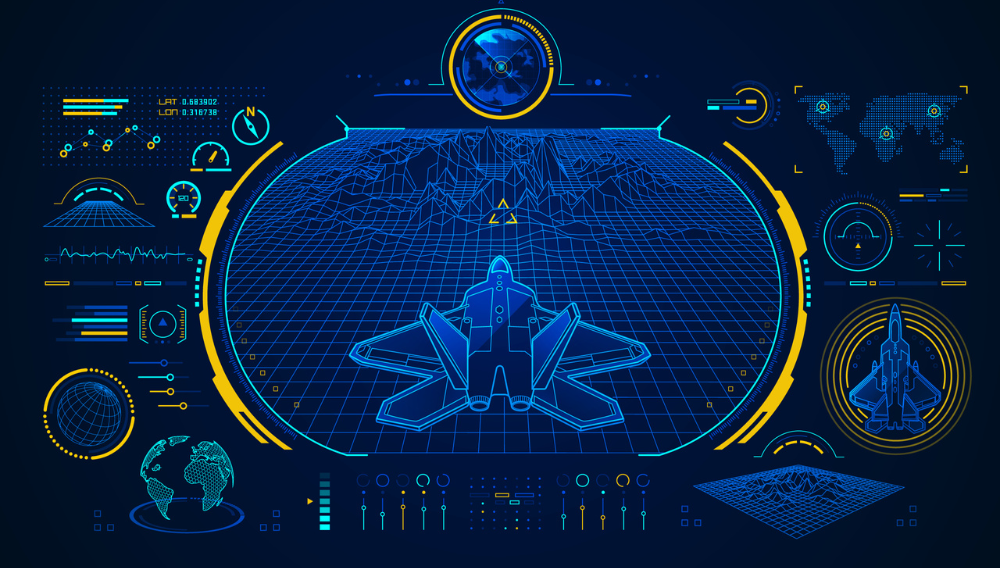3 min read
Balancing Act: Navigating Innovation and Affordability in Military Avionics
 Daniel Ryan
:
September 18, 2023
Daniel Ryan
:
September 18, 2023

Part 16 of the RTI Military Avionics Blog Series
The Military Avionics industry must optimize two objectives, which may sometimes seem to be in direct opposition. On the one hand, next-generation programs must compete in the global arena by delivering innovative digital capabilities. On the other, programs must flatten the cost curves for future aircraft acquisition. Balancing these two priorities in an era of increasing system complexity is a tall order.
The Modular Open Systems Approach (MOSA) flattens the cost curve for the military avionics community by providing a foundation for achieving this crucial balance. An important cornerstone of MOSA is the Future Airborne Capability Environment (FACE™) Technical Standard and business approach. The FACE approach employs modular design methodologies, uses widely supported and open, consensus-based standards for its key interfaces, and has a validation and verification process to ensure the completeness of its interfaces.
Another important building block is the adoption of globally-proven commercial standards such as RTCA DO-178C “Software Considerations in Airborne Systems and Equipment Certification” for airworthiness and safety certification for military avionics. This adoption of commercial safety standards opens the door to an existing ecosystem of commercial products and vendors. In addition, this adoption immediately yields benefits such as reduced program cost and risk, increased quality, and shortened time-to-deployment for new airborne technology.
Airworthiness Implications of the FACE Approach
The FACE™ Consortium focuses on deploying a technical standard that defines key interfaces within airborne software environments and accelerated business processes, with the following goals:
- Improve affordability of advanced capabilities
- Improve time-to-field, delivering new capabilities to the warfighter faster
These interfaces define the boundaries between five software segments that enable rapid software integration and inherent portability, showing a path towards a reducing cost and integration complexity for next generation aircraft – the faster you can procure the parts, the faster you can build the aircraft. FACE fosters a landscape where System Integrators can upgrade, reuse, or replace software components at all stages of the development and deployment life cycle. This open software environment fosters greater competition between FACE software suppliers and will lead to increased quality, lower cost-of-ownership, and faster acquisition cycles. For more on FACE architectural segments, please read this recent RTI blog post.
Modern Software Development Languages
Today, dynamic programming languages with large developer ecosystems are changing how aerospace engineers design and write software. In response, the Radio Technical Commission for Aeronautics (RTCA) introduced DO-178C “Software Considerations in Airborne Systems and Equipment Certification” with mechanisms to verify, validate, and safety certify new software concepts.
However, RTCA DO-178C stops short of specifying the software development language. The standard creates a framework of objectives that enable systems written with modern languages to undergo airworthiness qualification. This gives programs flexibility to design specifically for their unique system requirements. Some programs may choose to qualify a modern language with concepts that simplify software design and improve developer efficiency. Other programs may prioritize software reuse and airworthiness ease with a mature programming language with large legacy codebases. DO-178C enables the entire spectrum of design and development to be used.
Building Avionics Systems for the Future
So, back to the original topic: how do you flatten the cost curve and still enable advanced, highly competitive avionics to be built? Through consensus-driven, modular interfaces. MOSA-aligned initiatives, with a foundation of consensus-driven, open modular interfaces such as the FACE Technical Standard, enable portable, reusable software components that can reduce overall aircraft life cycle costs. Commercial standards like RTCA DO-178C help system integrators ensure program airworthiness while drawing from an existing ecosystem of high-quality commercial avionics software. By combining the two, you start to move the cost needle in the right direction.
RTI Connext TSS: Accelerating the Path To Airworthiness
Today, RTI is proud to announce the addition of a FACE TSS C API within RTI Connext® TSS. Combined with the existing C++ FACE TSS APIs, Connext TSS expands the ecosystem of software components available for aircraft development. System integrators will be able to design their system according to their unique program requirements – whether they’re focused on certification ease or accelerated software design.
Connext TSS is designed to be a critical component of any complex avionics system, and is the first Transport Services Segment (TSS) to receive conformance certification to the FACE Technical Standard, Edition 3.1. Coupled with RTI Connext® Cert, Connext TSS helps reduce cost and risk for modular, open, and safety-critical avionics systems. And combined with RTI’s diverse partner ecosystem, Connext TSS not only reduces program risk, but also accelerates integration, while delivering proven real-time performance, scalability and robustness.
For more information about Connext TSS, please visit this webpage.
To read other installments in the RTI Military Avionics Blog Series, please click here.
About the author:

Daniel Ryan is a Product Manager for Aviation Products at Real-Time Innovations (RTI), based in Louisville, KY. He manages RTI Connext TSS, the leading connectivity framework for mission and safety critical Avionics systems. Daniel earned a Bachelor’s of Engineering in Computer Engineering from Vanderbilt University.
Posts by Tag
- Developers/Engineer (180)
- Technology (79)
- Connext Suite (77)
- News & Events (75)
- 2020 (54)
- Aerospace & Defense (53)
- Standards & Consortia (51)
- Automotive (38)
- 2023 (34)
- 2022 (29)
- IIoT (27)
- 2025 (25)
- Leadership (24)
- Healthcare (23)
- 2024 (22)
- Connectivity Technology (21)
- Cybersecurity (20)
- 2021 (18)
- Culture & Careers (15)
- Military Avionics (15)
- FACE (13)
- Connext Pro (10)
- JADC2 (10)
- ROS 2 (10)
- Connext Tools (7)
- Connext Micro (6)
- Databus (6)
- Transportation (5)
- Case + Code (4)
- Connext (4)
- Connext Cert (4)
- Energy Systems (4)
- FACE Technical Standard (4)
- AI (3)
- Oil & Gas (3)
- Research (3)
- Robotics (3)
- Connext Conference (2)
- Edge Computing (2)
- Golden Dome (2)
- MDO (2)
- MS&T (2)
- RTI Labs (2)
- TSN (2)
- ABMS (1)
- C4ISR (1)
- DOD (1)
- ISO 26262 (1)
- L3Harris (1)
- LabView (1)
- MOSA (1)
- MathWorks (1)
- National Instruments (1)
- Simulation (1)
- Tech Talks (1)
- UAM (1)
- Videos (1)
- eVTOL (1)
 Success-Plan Services
Success-Plan Services